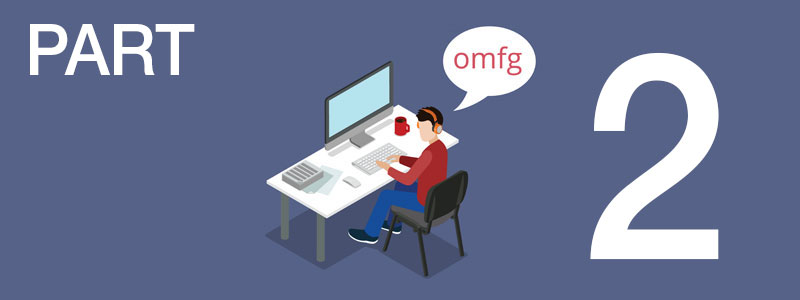
As previously discussed, sites like The Washington Post are seeing great results from posting more content on a daily basis – in that case, 1,200 posts a day for an increase of 28% web visitors over the same period last year.
That is a lot of content. But across the board, we are seeing more and more content published. For instance, Google indexed 1 trillion pages in 2008. Compare that to 2014, when it indexed 30 trillion pages. That’s right – a 29 trillion-page increase over 7 years. WordPress tracks posts as well, and they counted over 2 million posts published a day in July of 2016.
Far from the keyword rich posts from back in the day, this is still the quality content we’ve all been advised to produce – make it helpful, factual and appealing to your audience and keep them on the site.
So how much is too much? When will we reach the saturation point?
Right now, the data suggests – not anytime soon. Trends shows that more publishing is happening, aided by the fact that levels of internet access all over the world are increasing, bringing in new audiences and markets.
There is also the fact that automated content creation tools are getting better and better, making it easier for companies to publish more, with human eyes and hands doing more editing and curating than organic writing.
The key is to find several topics that are more appeal to a more specific audience, what is called the “long tail approach”. These may not be the most popular topics in your industry but instead cover a wide range of interests that area also being searched and can bring traffic to your site. The quality of the post will drive shares and mentions, whose combined numbers will outrank those of the most popular trending topics at that time.
So while you are producing more content, you are not repeating yourself over and over again. Instead you are producing content of which there is less already out in the system, resulting higher search rankings and more clicks. It all does not have to be long form content, however.
While the 1000 plus word articles have their place, don’t be afraid to post shorter articles, with pictures or a video. The mix of published posts will keep returning visitors engaged, and satisfy those with the 5.7 second attention span that most of us have when visiting a website for the first time.
So more content does not mean content overload in quantity, but there is still good reason to focus on also making it good quality.



